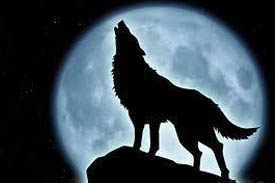Rifles: All that glitters is not gold
 The most popular rifle in sales these days is the SKS military rifle. When you purchase this rifle with bayonet and cleaning rod you think you are getting the real thing-lost in a cave someplace, in pristine condition, and a good cheap price. Surprise. These are Norinco Chinese copies made by the shipload for the USA consumer gun market. Most are junk-no they are all junk.
The most popular rifle in sales these days is the SKS military rifle. When you purchase this rifle with bayonet and cleaning rod you think you are getting the real thing-lost in a cave someplace, in pristine condition, and a good cheap price. Surprise. These are Norinco Chinese copies made by the shipload for the USA consumer gun market. Most are junk-no they are all junk.
The SKS ballistics are comparable to a 30-30 which implies it is a 200 yard rifle if you go to the trouble to improve its accuracy. Out of the box it has an accuracy of 8 inches at 100 yards. The best you could hope for is 2 inches if you replace the stock, throwing the bayonet and cleaning rod away, re-crowning the muzzle, bore conditioning, and lastly avoiding the rifles with pinned sights and gas tubes. If you are a hand loader you can improve slightly the 7.62 x 39 round.
The AK-47 (and clones) is another boatload of weapons made for the commercial market. You will probably have to have a gunsmith re-crown the muzzle and while you are at it have a trigger job done. The gas tube port frequently clogs. For those desiring to make this semi-auto into a full automatic it is unlikely as the US Government is well aware of this and mandated import manufactured restrictions. Besides you can go to prison if you are unlicensed to possess a fully automatic weapon. Hunting with a full auto is not what we are talking about anyway.
Old Mausers: Ballistics and accuracy for the 8mm and 7mm is about the same as a 30.06 and a .270, however factory ammunition is under loaded for age of the weapon related safety concerns. About 1900 the 8mm changed to a JS 8 mm, which could handle improved pressure. Your factory ammunition is the same as a 30-30, however rifles made during WWI and WWII vintage can be hand loaded up to 30-06 specifications if the rifle is pressure tested by a gunsmith. These are fine old weapons and best hung on the wall as some, especially the late WWII semi-automatics, are quite valuable to collectors in the $2,000.00 range.
The British Lee Enfield is a reliable firearm for deer hunting and has good accuracy out to 250 yards. The rimmed .303 British cartridge dates from 1888 and the ballistics are favorable beyond the 30-30 ranges. The better of these design changes is the MK2A made in the 1960’s in the .308 caliber, (7.62 NATO). Best improvements are a new stock and better sights. Trigger action is typical of a long pull military firearm and can be improved on by a gunsmith.
The 1917 US Enfield is a good purchase. If you just refinish the stock and bed (sold in kits) it will do fine for accuracy. The magazine clip is a bit tight and will flatten soft nose rounds. Use ballistic tips. This is a 30.06 caliber.
The Moisin-Nagant 1891 made from 1891 to 1950 is still floating around. The most valued of the design was made by SAKO in Finland as the M39. Do not get too excited about this heavy rifle. It is a 7.62 X54R cartridge and that means only NORMA sells it. Surplus ammunition may be available in a corrosive primer and most of the ones I have seen have corroded barrels requiring too much work. New barrels are not available as far as I know. Most of these 30-06 caliber ballistic similar rifles were militia issue and worn out. This is another wall hanger.
The 10-22 Ruger will meet your needs in a modern short twist .22LR. The aftermarket accessories abound. Probably replacing the stock and sights is standard interest and many have gone to a bull barrel. Barrel bedding is recommended. This is a very popular small .22LR rifle.
The Mini-14 Ruger semi-automatic rifle in the .223 caliber is very popular; the major complaints in past years have been poor accuracy. Fortunately if you buy a NEW Mini-14 it has been upgraded with new tool work and improved factory accuracy.
Anything made in the 90’s and earlier is of less inherent accuracy. Biggest complaints otherwise are the rear sights that break off and the front sight that wraps the muzzle and causes too much closure around the emerging initial ballistic projectile. This causes the rifle barrel to overheat. Some people have gone to a new bull barrel to overcome this problem. Removing the front sight plus band and placing a scope on the rifle is a good idea. You might consider a new stock with some bedding. Many people want a lighter trigger pull and that requires a gunsmith. I do not see any problem with that on the original stock mount but some aftermarket stocks will require work for a lighter trigger pull.
The Mini-13 now has an industry standard of 1 in 9 twist that means you want a heaver .223 than the earlier .223 that fired a standard 55-grain weight bullet with a 1 in 10 twist.
Ruger also makes a very nice Mini 30 rifle in a 7.62×39 caliber, which is a 30-30 ballistics, nice fast action for deer size targets. After market upgrades and paramilitary attachments abound.
Moving on to serious accuracy will require investment in a new rifle such as the Thompson Contender. What is advantageous about this single shot is that several different caliber barrel assemblies may be had. Those who have a TC rifle seldom sell it.
The Ruger single shot rifles are expensive and for a real single connoisseur shootist.
Lastly let me mention the lever action. Most notably are the Winchester, Marlin and Henry rifles made in the traditional lever action western fame. These are all very good, very accurate and have been major deer guns for decades. You are limited to soft nose ammunition as the cartridges fit in a tube under the barrel and are less likely to impact on the primer in line. Most important for me is the lever actions all have too small a hand lever and in the winter you want to wear gloves. Unfortunately I cannot get my gloved hand inside the lever action UNLESS I am lucky enough to find a special issue rifle that has the big loop hand lever-like in the Old Rifleman TV Western series. The commemorative John Wayne series has this bigger loop but is overpriced. For a period of time after I sold my Marlin 336 lever action, http://www.sportsmansguide.com/ sold a Marlin oversize lever. Alas!
I do prefer a .22LR in a semi-automatic tube fed rifle as one can hunt squirrels without the hand motion of working a bolt-action movement scaring the squirrels. The tube fed gives you extra rounds. Browning still makes the very accurate small, take down .22LR, four and one half pound semi-automatic-stock tube fed rifle; which makes a nice survival rifle, but the ejection fouls up fast from the action/ejection, and requires constant cleaning. The other downer, however slight is that the HOT cases are ejected downward on to your wrist.
Browning also made a wonderful-beautiful BAR model in Japan that is a full size rifle in .22 LR, slow twist standard loads, with under barrel tube and semi-automatic.
Speaking of Browning, and also Winchester, who merged with them, is that they offer on a number of rifles a patented muzzle compensator that reduces “kick” of the rifle recoil on your shoulder and also offers a fine internal ballistic tuning of the barrel oscillations.
As the bullet moves down the barrel in any rifle the rotation and expanding gasses cause fine oscillations of the barrel that effect accuracy. The Browning-Winchester “Tuning Fork” compensator corrects for this, and it really works. Read about this on their website: http://www.browning.com/
I think all rifles need this and it is worth the extra money. Especially the recoil compensation aspect is good for arthritic shoulders and lightweight ladies who want to shoot major caliber rifles but can not stand the recoil. A 30.06 M1 Garand has 18.6 lbs of recoil on the shoulder. A .300 Winchester Magnum has about 27 lbs of recoil on the shoulder. You just do not shoot these larger firearms all day long. The recoil compensator at the end of the barrel, either the Browning-Winchester model (best) or a Fox River model (Example) allows you to fire a .300 Winchester Magnum as if it was a .257. http://www.cabelas.com did offer gunsmith services in this regard.
There are many, many fine manufacturers of rifles on the market. Generally people go for the old surplus rifles first rationalizing they are adequate (?) and most of all cheap in price. Unfortunately they are for the most part out of date and unreliable. Although it may cost you more I would strongly say to save up your money in the cookie jar and buy a new high-end rifle that you can use for the rest of your life. Deer hunting will always be available in the National Forests even though farm hunting is slowly being eroded away by developers and new homes going up. With development the rules for rifles and such will change.
You need but one rifle and one bullet at a time. Make that shot count and you will not be noticed where you are as you would firing a string of shots. There does exist a history of thugs robbing others of their deer prize.
“Respect the man with one rifle-he probably knows how to use it”. – Anonymous
 The lead-in picture is of Audie Murphy, son of a Texas sharecropper who lived in hard times. Born in 1924, he joined with millions of other young men the Army’s call to arms. He became the most distinguished WWII Hero, single-handedly killing over 50 German Soldiers and stopping an armed force. He received all of the 33 decorations and medals awarded, the Silver Star twice, and the Medal of Honor. The French and Belgium Governments decorated him in addition.
The lead-in picture is of Audie Murphy, son of a Texas sharecropper who lived in hard times. Born in 1924, he joined with millions of other young men the Army’s call to arms. He became the most distinguished WWII Hero, single-handedly killing over 50 German Soldiers and stopping an armed force. He received all of the 33 decorations and medals awarded, the Silver Star twice, and the Medal of Honor. The French and Belgium Governments decorated him in addition.
Audi Murphy left the Army in 1945, at the close of the war, and entered the motion picture industry. He produced and stared in 40 films. Most notably was his biography “To Hell and Back”. He died at age 46 in a small plane accident. He was buried in Arlington National Cemetery. Over 4 million people visit his gravesite each year, second only to John F. Kennedy.
Audi Murphy stands as a true American Hero and an inspiration to all.
God Bless
Copyright: 2009, Back2theLand.com, Mark Steel.



